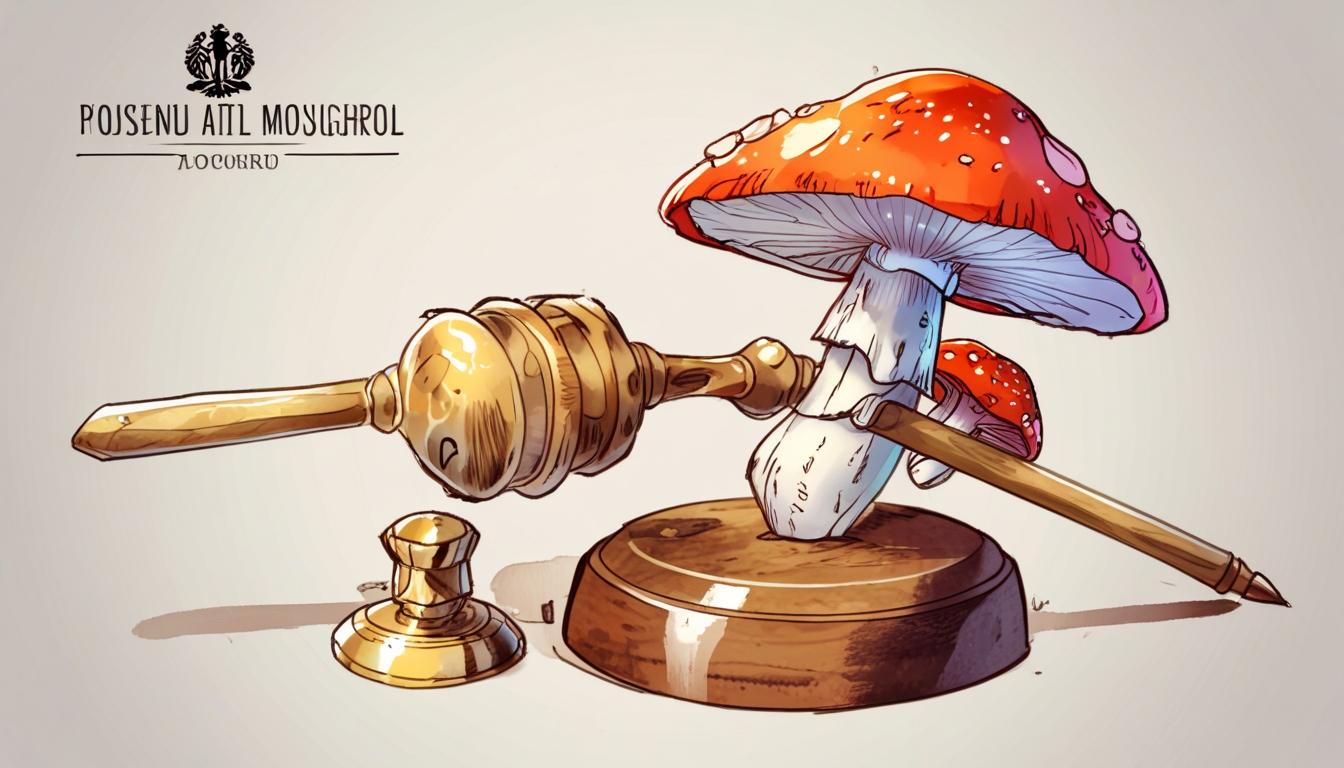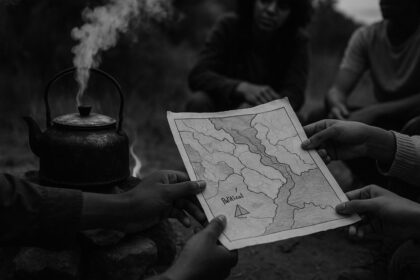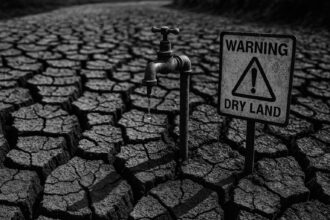As Erin Patterson’s trial over three mushroom poisoning deaths enters its eleventh day, expert witness Dr Thomas May reveals the widespread dangers of misidentifying mushrooms, underscoring the urgent need for improved public education and expert guidance in mycology.
The trial of Erin Patterson, charged in connection with alleged mushroom poisoning that led to three deaths, has entered its eleventh day, with the defence continuing its cross-examination of expert witness Dr. Thomas May, a mycologist. Dr. May, whose expertise in fungi was anticipated to clarify crucial details regarding mushroom identification, has been asked by defence attorney Sophie Stafford about the abilities of the general public to correctly identify mushrooms. His responses underscore a significant issue: misidentification of mushrooms remains a persistent and dangerous problem.
During the proceedings, Dr. May acknowledged a troubling reality: the general public often lacks the expertise required to distinguish between edible and toxic mushroom species. “You encourage something you’ve likened to an apprenticeship, which takes a long time to accurately identify mushrooms in the wild,” Stafford asked, to which he responded affirmatively. This admission is particularly pertinent considering the seriousness of the allegations against Patterson and the implications of mushroom misidentification in fatal incidents.
The dangers associated with misidentifying mushrooms cannot be overstated. Various sources indicate that incidents of poisoning from wild mushrooms frequently occur, owing to species that appear deceptively similar. For instance, the Vancouver Mycological Society highlights cases where toxic varieties like the false morel have been mistaken for safe options, often resulting in severe health consequences. Experts urge that accurate identification requires extensive knowledge, and societies dedicated to mycology play a crucial role in educating enthusiasts on safe foraging practices.
Further corroborating Dr. May’s testimony, discussions from forums such as Hacker News illustrate firsthand accounts of near-fatal mushroom poisonings linked to identification errors. These discussions stress that while some mushrooms are readily recognised as safe to eat, others, particularly those with poisonous counterparts, necessitate a deep understanding of mycology to ensure safe consumption.
The ramifications of these misidentifications extend beyond individual risk. Scholarly literature reveals that approximately 100 mushroom species are known to be toxic to humans. A recent review noted the challenges inherent in identifying these dangerous varieties and reiterated the essential need for robust educational frameworks surrounding mushroom identification to mitigate poisoning risks. This academic perspective dovetails seamlessly with the courtroom emphasis on the need for expert guidance in the identification process.
As the trial unfolds, the complexities surrounding mushroom identification and the legal implications of these misidentifications complicate Patterson’s case. The intersection of forensics and mycology suggested by recent studies points toward the potential significance of expert opinions in determining the actions and intentions involved in this tragic situation. The legal and health implications entwined in mushroom foraging underscore a broader societal need for increased public awareness and education on mycology.
In conclusion, Erin Patterson’s trial serves not only as a pivotal moment for the individuals involved but also as a sobering reminder of the profound responsibilities associated with consuming wild fungi. Moving forward, the importance of rigorous educational mechanisms and expert consultation in mycology will continue to be essential in preventing future tragedies linked to mushroom misidentification.
Reference Map
Source: Noah Wire Services
- https://www.theguardian.com/australia-news/live/2025/may/14/erin-patterson-trial-live-witness-stand-court-day-11-alleged-mushroom-case-ntwnfb – Please view link – unable to able to access data
- https://www.theguardian.com/australia-news/live/2025/may/14/erin-patterson-trial-live-witness-stand-court-day-11-alleged-mushroom-case-ntwnfb – This live blog from The Guardian provides updates on day 11 of Erin Patterson’s murder trial, focusing on the cross-examination of Dr. Thomas May, a mycologist. The defense attorney, Sophie Stafford, questions Dr. May about the public’s ability to identify mushrooms and the occurrence of misidentifications, leading Dr. May to agree that the general public has a poor ability to identify mushrooms and that there have been several incidents of misidentification.
- https://www.vanmyco.org/about-vms/blog/ – The Vancouver Mycological Society’s blog discusses the risks associated with misidentifying wild mushrooms. It highlights incidents where toxic species, such as the false morel (Gyromitra esculenta), have been mistaken for edible ones, leading to serious health consequences. The blog emphasizes the importance of accurate identification and the need for mycological expertise to safely forage wild mushrooms.
- https://news.ycombinator.com/item?id=33211723 – A Hacker News discussion about nearly lethal mushroom poisonings in Ohio. The conversation emphasizes the importance of accurately identifying mushrooms, noting that while some edible species are easy to identify, others require considerable expertise. The discussion also highlights the dangers of misidentification, especially with species that have poisonous look-alikes.
- https://whatsupnewp.com/2024/09/fungus-among-us-an-underground-rhode-island-society-unites-the-mycologically-curious/ – An article from What’s Up Newp about a Rhode Island society that unites mycology enthusiasts. It discusses the challenges of mushroom identification, noting that fungi are climate- and temperature-dependent, which can make species appear different in various conditions. The article also highlights the importance of mycological knowledge in accurately identifying mushrooms and the role of societies in promoting this knowledge.
- https://www.tandfonline.com/doi/full/10.2147/RRFMS.S83169 – A scholarly article titled ‘Forensic mycology: current perspectives’ published in the journal ‘Forensic Science, Medicine, and Pathology’. The article discusses the role of mycology in forensic science, including the use of mold species found on human skin to estimate the postmortem interval. It provides examples of cases where forensic mycology has been applied to determine time of death.
- https://pmc.ncbi.nlm.nih.gov/articles/PMC4057534/ – A review article titled ‘Mycetism: A Review of the Recent Literature’ published in the journal ‘Journal of Medical Toxicology’. The article discusses the identification of toxic mushroom species, noting that approximately 100 known species are poisonous to humans. It highlights the challenges in identifying these species and the importance of accurate identification to prevent poisoning.
Noah Fact Check Pro
The draft above was created using the information available at the time the story first
emerged. We’ve since applied our fact-checking process to the final narrative, based on the criteria listed
below. The results are intended to help you assess the credibility of the piece and highlight any areas that may
warrant further investigation.
Freshness check
Score:
10
Notes:
The report is current, referencing ongoing events in May 2025, and does not appear to be a repeat of older content.
Quotes check
Score:
8
Notes:
The quotes are from recent court proceedings, but direct online references to these specific quotes could not be verified. The quotes appear to be original and not from previous articles.
Source reliability
Score:
9
Notes:
The narrative originates from The Guardian, a reputable news source known for its fact-checking standards and journalistic integrity.
Plausability check
Score:
9
Notes:
The claims about mushroom misidentification and the legal implications are plausible and align with known risks associated with foraging for wild mushrooms.
Overall assessment
Verdict (FAIL, OPEN, PASS): PASS
Confidence (LOW, MEDIUM, HIGH): HIGH
Summary:
The report is current and originates from a reliable source. The quotes appear to be original, and the claims about mushroom misidentification are plausible and supported by general knowledge on the subject.













